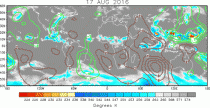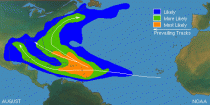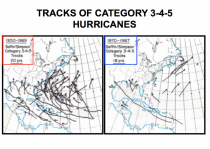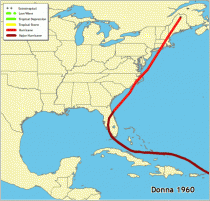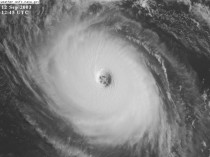Steve Milloy, Dr. John Dunn & and Dr. Stan Young versus EPA before the National Academy of Sciences over EPA’s illegal human experiments. August 24 at 1pm ET via webinar. You can listen in. Instructions below.
Summary of Event
EPA secretly hired the National of Sciences (NAS) to whitewash its program of illegal human experimentation. When Milloy learned of the EPA’s plans, Milloy exposed them and compelled the NAS to re-open the virtually concluded process and have a public meeting, which will take place on Aug. 24 at 1pm ET.
A more detailed explanation is in Milloy’s July 24 commentary in the Washington Times (also reprinted below).
What Will Happen at the NAS Meeting?
Steve Milloy, MHS, JD, LLM, John Dunn, MD, JD and Stan Young, PhD will each make a 30-minute presentation to the NAS Committee about the EPA human experiments. This will all be new, incriminating-to-EPA information that the NAS Committee has never heard before.
How Can You Listen to the Meeting?
The NAS web page for the meeting is here. The meeting is August 24 at 1pm ET. It will be held by webinar so everyone can listen in and even ask questions or make comments. Listening or participating in the webinar requires that you download/install WebEx software. It’s very easy to do. Please contact Orin Luke at the NAS (oluke@nas.edu) and he will set you up.
If you have questions or are media and want to contact me, please do so here.
The EPA’s secret whitewash
The agency enlists an elite group of scientists to rubber stamp illegal experiments
By Steve Milloy
July 24, 2016, Washington Times
The U.S. Environmental Protection Agency (EPA) is trying to use the prestigious National Academy of Sciences (NAS) to cover-up the agency’s illegal science experiments on humans. Four years ago I broke the story in this paper that the EPA was conducting illegal toxicity experiments on human beings. In short, the EPA intentionally exposed hundreds of humans in a gas chamber to exceedingly high levels of air pollutants like diesel exhaust, soot and smog in hopes of causing serious health effects that the agency could point to as justification for its costly and stringent outdoor air quality standards. Study subjects included the elderly (up to age 80), asthmatics, diabetics and people with heart disease - the very people EPA claims are most susceptible to air pollution. EPA failed to tell these study subjects it believed the experiments could cause death.
The experiments were fundamentally unethical and illegal as federal law prohibits treating humans as guinea pigs, especially for the mere purpose of advancing an agency’s regulatory agenda. Extra illegality was added by the agency’s failure to inform its human guinea pigs that it believed the experiments could kill them.
After a series of articles in this paper, Freedom of Information Act requests and a federal lawsuit, Congress got involved by asking the EPA inspector general to review the allegations. The EPA inspector general eventually issued a March 2014 report in which it confirmed my allegations, including that the EPA had failed to inform the study subjects that EPA believed the experiments might kill them.
Fast forward to this summer when I received a startling tip from a source that the National Academy of Sciences had undertaken a review of the EPA’s human experiments. As it turns out, however, the NAS process isn’t really a review - it’s an EPA-instigated effort to whitewash EPA’s illegal conduct. Worse, the whitewash has been conducted, like the EPA’s experiments, pretty much in secret.The EPA was undoubtedly stung by the inspector general report that produced major media headlines such as the Associated Press’ “EPA Fails to Disclose Risks in Human Tests” and The New York Times’ “EPA Faulted for Failure to Report Risks. To erase its wrongdoing, the EPA went the only place where it could control the outcome, the NAS.”
Established in 1863 to advance science in America, the NAS has become a prestigious honorary membership group for America’s elite scientists. While the NAS and its membership aren’t directly for hire, the NAS operates an affiliate called the National Research Council (NRC) that is. The NRC gets itself hired by federal agencies in need of independent- and authoritative-appearing reports. So that’s what EPA did. It commissioned the National Research Council to review and paper over its illegal human experiments - in secret.
As the person who instigated the EPA inspector general’s report and is most familiar with EPA’s human experiment skullduggery, I only inadvertently learned of the NAS review in June 2016, more than one year after the NAS committee’s first meeting on June 1, 2015 and about two months after the committee’s fifth and last meeting in April 2016. Of the five committee meetings, only one, the first, is now described by the NAS as open to the public. But it really wasn’t.
There was no public announcement of the June 1, 2015 meeting and the only party to supply the committee with information at the meeting was the EPA. The June 1, 2015 meeting isn’t even listed in the NAS’ daily calendar for that date. When I asked the NAS staff about the lack of notice, I was told that there was notice on the committee’s web page. But of course, there had been no notice that the committee had been formed in the first place, so how would anyone know to check its web page?
I was able to obtain the materials made available to the committee by the EPA. None of these materials provide any context to the committee concerning the origins of the inspector general report or the context of the EPA human testing scandal. The material in the public docket is both incomplete and much of what’s there is misleading. Even assuming that committee members are acting in good faith, they are certainly acting in the dark.
When I found out about the committee, I contacted NAS staff and was told the committee was already working on its final report. But I was welcome to submit comments to the docket, which I hurriedly did. But I also asked for something else - for the opportunity to make a presentation to the committee. The controversy surrounding EPA’s experiments is complex and summary words appended to the docket just don’t do it justice. I have also written to all committee members asking for the opportunity to make a presentation. But as of yet, I have not even received an acknowledgment of my request.
But I have heard from a reliable source close to the NAS committee that the “fix is in” and EPA is likely to get the clean bill of health for which it is paying.
Now I have dealt with the EPA for over 25 years. As detailed on this page many times, I have come not to expect good faith or honesty from the agency. The NAS on the other hand is a different matter.
The NAS holds itself out as “nation’s pre-eminent source of high-quality, objective advice on science, engineering, and health matters.” If that is true, the NAS is certainly doing itself and its elite membership no favors by being paid to conduct a secret and ill-informed whitewashing of EPA’s illegal conduct.
Steve Milloy publishes JunkScience.com and is a senior legal fellow at the Energy and Environmental Legal Institute.
John Kerry Targets Your Air Conditioner
By Dr. By Larry Bell
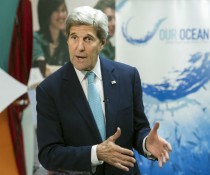
Having tamed the threat of a nuclear Iran with a daft stroke of diplomacy, Secretary of State John Kerry has now redirected his attention to an adversary equally as dangerous as the Islamic State terrorism lurking within our midst.
Just how dangerous? As he pointed out, “It’s hard for some people to grasp it, but what we-you-are doing here right now is of equal importance because it has the ability to literally save life on the planet itself.”
Kerry was referring to fighting diabolical influences of hydrofluorocarbons (HFCs) insidiously chilling in our very homes and offices. Speaking at a July conference in Vienna, he described them as “… exceptionally potent drivers of climate change - thousands of times more potent, for example, than CO2.”
The meeting purpose was to amend the 1987 Montreal Protocol that would phase out their uses in all household and commercial appliances such as air conditioners, refrigerators, and inhalers.
Yes, and like ISIS threat escalation, Kerry warned, “Climate change is happening - and it is happening quicker than most of us ever anticipated.”
Attributing a climate crisis to growing use of hydrofluorocarbons, he said, “Week after week, month after month, year after year, we continue to see new evidence, tangible evidence, of the danger climate change poses to our planet. Last year was the hottest in recorded history . . . but 2016 is on track to be even hotter.”
This certainly isn’t the first time that the secretary of state has warned us of this dire emergency. Speaking at a Feb. 16, 2014 press conference in a U.S. Embassy-run American Center held in a Jakarta shopping mall he described climate change as the world’s “most fearsome weapon of mass destruction.” He told the audience: “The science is unequivocal, and those who refuse to believe it are simply burying their heads in the sand. We don’t have time for a meeting anywhere of the Flat Earth Society.”
Yet if true, then why, do satellite instruments orbiting around an obviously spherical planet tell us differently? Other than naturally-occurring 1998 and 2015 El Nino temperature spikes, they haven’t recorded any statistically significant warming for nearly two decades.
And regarding last year being the “hottest in history,” those same satellites show that 2015 was only the third warmest year since recordings first began in 1979.
Incidentally, satellite imaging also reveals that increased atmospheric CO2 plant-fertilizing “pollution” levels have resulted in significantly enhanced global greening.
Nonetheless, as one not inclined to let a perfectly good manufactured crisis go to waste, Secretary John Kerry has referred to climate change at the “most serious challenge we face on the planet.”
Accordingly, he stated that “Amending the Montreal protocol to phase down HFCs is one of the single most important steps the world could possibly take at this moment to stave off the worst impacts of climate change.”
Such a move, he said, could help to prevent a global temperature rise of 0.5 degrees Fahrenheit by the end of the century, a remarkably precise projection in light of the enormous inaccuracies demonstrated so far by U.N. Intergovernmental Panel on Climate Change (IPCC) computer models. In fact even the IPCC’s own 2001 Summary Assessment Report concluded: “The climate system is a coupled non-linear chaotic system, and therefore the long-term prediction of future climate states is not possible.”
“Staving off” highly speculative climate impacts comes at an enormous pain and cost. EPA’s climate-premised regulations based upon congressionally unintended executive branch abuse of the Clean Air Act has already succeeded in bankrupting the entire U.S. coal industry just as former presidential candidate, now chief White House resident promised he would. A 2015 McKinsey and Company study shows that all producers together lacked the $45 billion needed to fund their current debts, employee pension plans and reclamation liabilities.
EPA Administrator Gina McCarthy even admitted during a U.S. House hearing that devastating anti-coal CO2 restrictions attached to their so-called “Clean Power Plan” wouldn’t have any measurable impact on global warming. Nevertheless, she defended the policy because, “We see it as having had enormous benefit in showing sort of domestic leadership as well as garnering support around the country for the agreement we reached in Paris.”
Following coal plants, what’s next on EPA’s regulatory hit parade? Speaking in Vienna, Kerry left little doubt: “Already, the HFCs use in refrigerators, air conditioners, and other items are emitting an entire gigaton of carbon dioxide-equivalent pollution into the atmosphere annually. Now, if that sounds like a lot, my friends, it’s because it is. It’s the equivalent to emissions from nearly 300 coal-fired power plants every single year.”
So OK Secretary Kerry, rather than quibble about the fact that there will be no measurable benefits, why not set a noble example? Ban air conditioning in all of your agency’s offices anyway.
Larry Bell is an endowed professor of space architecture at the University of Houston where he founded the Sasakawa International Center for Space Architecture (SICSA) and the graduate program in space architecture. He is the author of “Scared Witless: Prophets and Profits of Climate Doom” (2015) and “Climate of Corruption: Politics and Power Behind the Global Warming Hoax” (2012).
See also how he is planning a Boston climate conference in 2017 with the Chinese. He was voted by scholars in 2015 the worst (most ineffective) Secretary of State in the last 50 years. He is living up to that every day.
Morten Garly Andersen Credit: Technical University of Denmark
A team of scientists from the National Space Institute at the Technical University of Denmark (DTU Space) and the Racah Institute of Physics at the Hebrew University of Jerusalem has linked large solar eruptions to changes in Earth’s cloud cover in a study based on over 25 years of satellite observations.
The solar eruptions are known to shield Earth’s atmosphere from cosmic rays. However the new study, published in Journal of Geophysical Research: Space Physics, shows that the global cloud cover is simultaneously reduced, supporting the idea that cosmic rays are important for cloud formation. The eruptions cause a reduction in cloud fraction of about 2 percent corresponding to roughly a billion tonnes of liquid water disappearing from the atmosphere.
Since clouds are known to affect global temperatures on longer timescales, the present investigation represents an important step in the understanding of clouds and climate variability.
“Earth is under constant bombardment by particles from space called galactic cosmic rays. Violent eruptions at the Sun’s surface can blow these cosmic rays away from Earth for about a week. Our study has shown that when the cosmic rays are reduced in this way there is a corresponding reduction in Earth’s cloud cover. Since clouds are an important factor in controlling the temperature on Earth our results may have implications for climate change”, explains lead author on the study Jacob Svensmark of DTU.
Very energetic particles
These particles generate electrically charged molecules - ions - in Earth’s atmosphere. Ions have been shown in the laboratory to enhance the formation of aerosols, which can serve as seeds for the formation of the cloud drops that make up a cloud. Whether this actually happens in the atmosphere, or only in the laboratory is a topic that has been investigated and debated for years.
When the large solar eruptions blow away the galactic cosmic rays before they reach Earth they cause a reduction in atmospheric ions of up to about 20 to 30 percent over the course of a week. So if ions affect cloud formation it should be possible to observe a decrease in cloud cover during events when the Sun blows away cosmic rays, and this is precisely what is done in this study.
The so-called ‘Forbush decreases’ of the cosmic rays have previously been linked to week-long changes in Earth’s cloud cover but the effect has been debated at length in the scientific literature. The new study concludes that “there is a real impact of Forbush decreases on cloud microphysics” and that the results support the suggestion that “ions play a significant role in the life-cycle of clouds”.
Arriving at that conclusion was, however, a hard endeavor; Very few strong Forbush decreases occur and their effect on cloud formation is expected to be close to the limit of detection using global atmospheric observations measured by satellites and land based stations. Therefore it was of the greatest importance to select the strongest events for study since they had to have the most easily detected effect. Determining this strength required combining data from about 130 stations in combination with atmospheric modeling.
This new method resulted in a list of 26 events in the period of 1987-2007 ranked according to ionization. This ranked list was important for the detection of a signal, and may also shed some light on why previous studies have arrived at varied conclusions, since they have relied on events that were not necessarily ranked high on the list.
Possible long term effect
The effect from Forbush decreases on clouds is too brief to have any impact on long-term temperature changes.
However since clouds are affected by short term changes in galactic cosmic radiation, they may well also be affected by the slower change in Solar activity that happens on scales from tens to hundreds of years, and thus play a role in the radiation budget that determines the global temperature.
The Sun’s contribution to past and future climate change may thus be larger than merely the direct changes in radiation, concludes the scientists behind the new study.
Explore further: Cosmic meddling with the clouds by seven-day magic
More information: J. Svensmark et al, The response of clouds and aerosols to cosmic ray decreases, Journal of Geophysical Research: Space Physics (2016). DOI: 10.1002/2016JA022689
Provided by: Technical University of Denmark
The models are smelling trouble for the western Atlantic. It should not surprise you given the SSTAs, the less hostile MJO and the calendar.
Water is warm throughout the Atlantic Basin, warmest in the west.
The MJO is becoming less hostile to convection. The green areas support outflow aloft, allowing thunderstorm clusters to more easily organize.
In August (usually after mid-month), the activity picks up in the entire development region.
Each of the global models develop storms. The scariest yesterday was the tropical storm friendly GEM. Overnight it was the GFS 06z.
ANALOG SUPPORT FOR TROUBLE
The CPC Constructed analog which looks back at SSTA patterns 45N to 45S several seasons has not surprisingly 1998 ranked high still but has 1960 just behind. The WB Pioneer model which looks at SSTAs there and in higher latitudes but also at atmospheric and oceanic and solar factors has a mix of troublesome tropical years in the top 10 including 1969, 2003, 2004, 2005, 1960 is not in the top 10 but not far behind.
1960 was famous for Hurricane Donna, a major hurricane which produced hurricane force winds in all the states on the east coast from Florida north. The year in the top 10 for both was 2003. 2003 had Isabel which pounded the Chesapeake Bay and Mid Atlantic.
Here is an NHC cliff noted recap of the highlights of Donna in 1960 and Isabel (2003).
Hurricane Donna 1960
One of the all-time great hurricanes, Donna was first detected as a tropical wave moving off the African coast on August 29. It became a tropical storm over the tropical Atlantic the next day and a hurricane on September 1. Donna followed a general west-northwestward track for the following five days, passing over the northern Leeward Islands on the 4th and 5th as a Category 4 hurricane and then to the north of Puerto Rico later on the 5th. Donna turned westward on September 7 and passed through the southeastern Bahamas. A northwestward turn on the 9th brought the hurricane to the middle Florida Keys the next day at Category 4 intensity. Donna then curved northeastward, crossing the Florida Peninsula on September 11, followed by eastern North Carolina (Category 3) on the 12th, and the New England states (Category 3 on Long Island and Categories 1 to 2 elsewhere) on the 12th and 13th. The storm became extratropical over eastern Canada on the 13th.
Donna is the only hurricane of record to produce hurricane-force winds in Florida, the Mid-Atlantic states, and New England. Sombrero Key, Florida reported 128 mph sustained winds with gusts to 150 mph. In the Mid-Atlantic states, Elizabeth City, North Carolina reported 83 mph sustained winds, while Manteo, North Carolina reported a 120 mph gust. In New England, Block Island, Rhode Island reported 95 mph sustained winds with gusts to 130 mph.
Donna caused storm surges of up to 13 ft in the Florida Keys and 11 ft surges along the southwest coast of Florida. Four to eight ft surges were reported along portions of the North Carolina coast, with 5 to 10 ft surges along portions of the New England coast. Heavy rainfalls of 10 to 15 inches occurred in Puerto Rico, 6 to 12 inches in Florida, and 4 to 8 inches elsewhere along the path of the hurricane.
The landfall pressure of 27.46 inches makes Donna the fifth strongest hurricane of record to hit the United States. It was responsible for 50 deaths in the United States. One hundred and fourteen deaths were reported from the Leeward Islands to the Bahamas, including 107 in Puerto Rico caused by flooding from the heavy rains. The hurricane caused $387 million in damage in the United States and $13 million elsewhere along its path.
Hurricane Isabel 2003

<
a href="http://icecap.us/images/uploads/H10.gif" title="Enlarged">Enlarged
A well-organized but slow moving tropical wave that exited the African coastline on September 1st developed into Tropical Storm Isabel on the morning of September 6th. Isabel became a hurricane on September 7th and rapidly intensified to Category 4 hurricane strength on the evening of the 8th while the eye was located more than 1100 miles to the east of the Leeward Islands. This impressive hurricane reached Category 5 strength on September 11th, making Isabel the strongest hurricane in the Atlantic basin since Mitch in October 1998. The cyclone turned northwestward around the western periphery of the Atlantic ridge beginning on the 15th. Isabel began to weaken on the 15th as conditions aloft became more hostile, and it fell below major hurricane strength for the first time in eight days on the 16th.
Although weakening, Isabel’s wind field continued to expand as hurricane warnings were issued for most of the North Carolina and Virginia coastline, including the Chesapeake Bay. Isabels large eye pushed ashore just after the noon hour on September 18th near Drum Inlet along North Carolina’s Outer Banks. Isabel was the worst hurricane to affect the Chesapeake Bay region since 1933. Storm surge values of more than 8 feet flooded rivers that flowed into the Bay across Virginia, Maryland, Delaware, and Washington, D.C. Isabel brought tropical storm force gusts as far north as New York State as it moved inland. The most intense hurricane of the 2003 season directly resulted in 17 deaths and more than 3 billion dollars* in damages. The large wind field toppled trees and cut power to more than four million customers.




